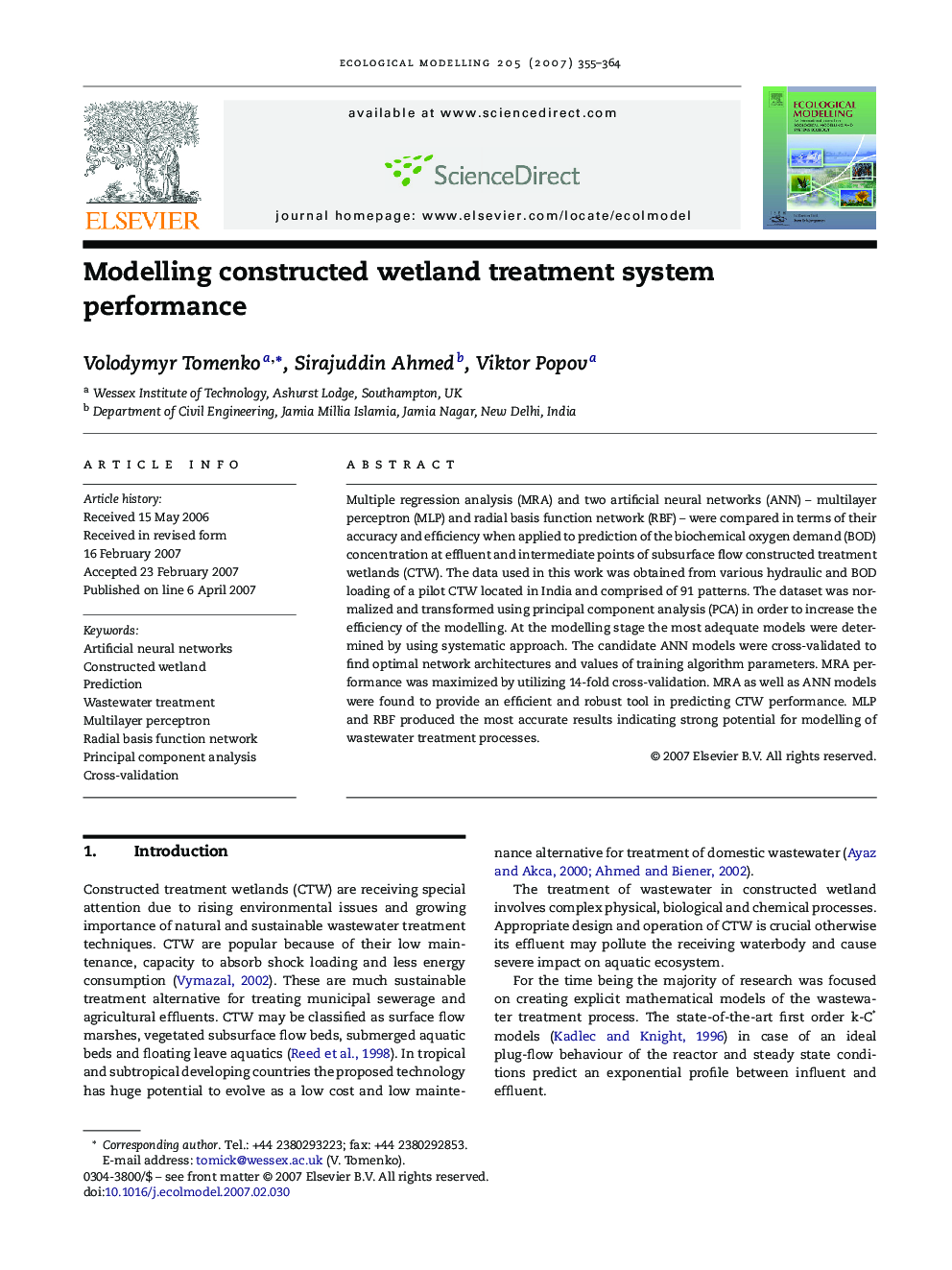| Article ID | Journal | Published Year | Pages | File Type |
|---|---|---|---|---|
| 4378756 | Ecological Modelling | 2007 | 10 Pages |
Multiple regression analysis (MRA) and two artificial neural networks (ANN) – multilayer perceptron (MLP) and radial basis function network (RBF) – were compared in terms of their accuracy and efficiency when applied to prediction of the biochemical oxygen demand (BOD) concentration at effluent and intermediate points of subsurface flow constructed treatment wetlands (CTW). The data used in this work was obtained from various hydraulic and BOD loading of a pilot CTW located in India and comprised of 91 patterns. The dataset was normalized and transformed using principal component analysis (PCA) in order to increase the efficiency of the modelling. At the modelling stage the most adequate models were determined by using systematic approach. The candidate ANN models were cross-validated to find optimal network architectures and values of training algorithm parameters. MRA performance was maximized by utilizing 14-fold cross-validation. MRA as well as ANN models were found to provide an efficient and robust tool in predicting CTW performance. MLP and RBF produced the most accurate results indicating strong potential for modelling of wastewater treatment processes.
